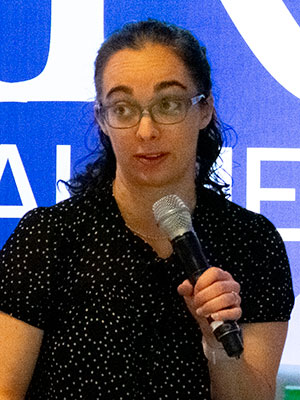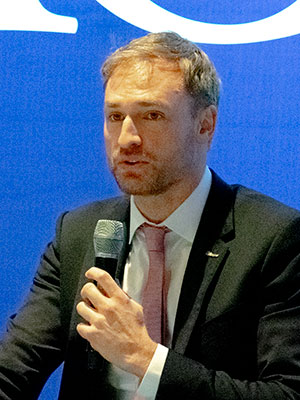
The rapidly changing world of medical apps has made for some exciting breakthroughs, but generally, the rheumatology community hasn’t seen as many of these advances because it has been slower to adopt these technologies.
On Saturday morning during the session Doctor, Should I Get This App?, two advocates of the potential of mobile apps talked about their experiences. Both Alexis Ogdie, MD, MSCE, Associate Professor of Medicine and Epidemiology, Perelman School of Medicine, University of Pennsylvania, and W. Benjamin Nowell, MSW, PhD, Director, Patient-Centered Research, Global Healthy Living Foundation and Principal Investigator of ArthritisPower® Patient-Powered Research Network, identified the apps available for clinicians and researchers in rheumatology and their patients and how to use them effectively in cooperation with their patients.
For patients, something as simple as a fitness tracker or smart watch can help physicians make improved decisions regarding care. And as prices for these devices continue to decrease as more types of devices become available, even more patients can access them. These devices can help solve the problem of getting an accurate report from the patient of what’s happening in the three or four months between in-office visits. The clinician can rely on data instead of patient recall.

“You might have a better sense of how things are actually going,” Dr. Ogdie said. “If we knew how someone’s disease activity has been tracking on a biweekly basis over the course of four months, we might get a very different perspective than if we’ve just asked them how they have been doing over the last four months.”
There are many apps designed to help with the most common lifestyle interventions — exercise/movement, obesity, stress/relaxation/mindfulness, and sleep. Dr. Odgie recommends starting with one lifestyle intervention to not overwhelm the patient and improve the chances of adherence.
Goal-setting is important, also. Almost everybody who gets a step-counting app starts the first two or three weeks walking more because they are watching closely how much they walk, before reverting to normal.
“So we kind of discount the first two weeks. After that, you see what their true baseline is, then you want to go up by 20%, 30% and keep increasing,” Dr. Ogdie said. “Most of our patients with advanced arthritis are not going to get to 10,000 steps a day, but some can. It’s just good to think about what’s the baseline and how I am increasing their activity.”
Dr. Odgie also touched on some of the physician-directed apps available today. Some of the apps, for example, work directly with electronic medical records.
Medical apps are also now entering the research field in greater numbers, too, offering the opportunity to track data in ways never before possible. Dr. Odgie noted that wearable technology could ease a common burden for patients participating in clinical trials: constant office visits.
Dr. Nowell said that it was important to understand the barriers to finding or creating the perfect medical app. The evidence base can be limited because by the time any app study is published, the app is irrelevant or updated significantly, technology infrastructure issues make it tough to ensure consistency, patient hand disability can impact use, and privacy and security issues must be addressed. Also, a patient may already have an approach to their disease management — pen and paper recording, or computer spreadsheets — that works well.
What is a “perfect” medical app, Dr. Nowell asked? It needs to meet the needs of those using it, of course, but it also has to be engaging so users actually use it.
“There’s evidence that shows that 25% of people download an app and use it only once,” he said. “So we want to make sure that an app is engaging, that there’s some stickiness, the industry term for it, that people keep coming back and using it.”


